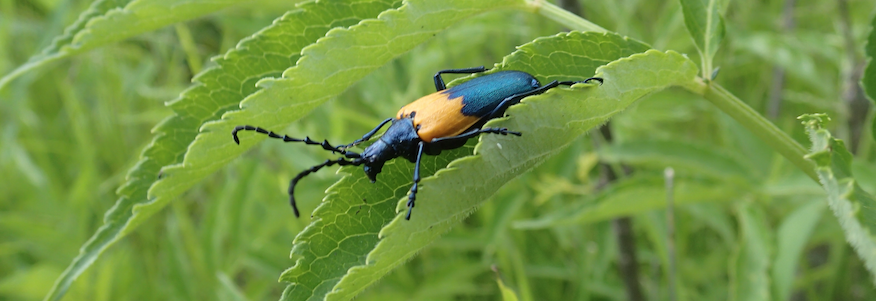

Color in the field!
As spring rains give way to warm, sunny days, the meadows of Mount Rogers come to life with the emergence of a plethora of insects. Among these creatures is a beetle with a striking iridescent blue body and a yellow-orange wash across its elytra (forewings).